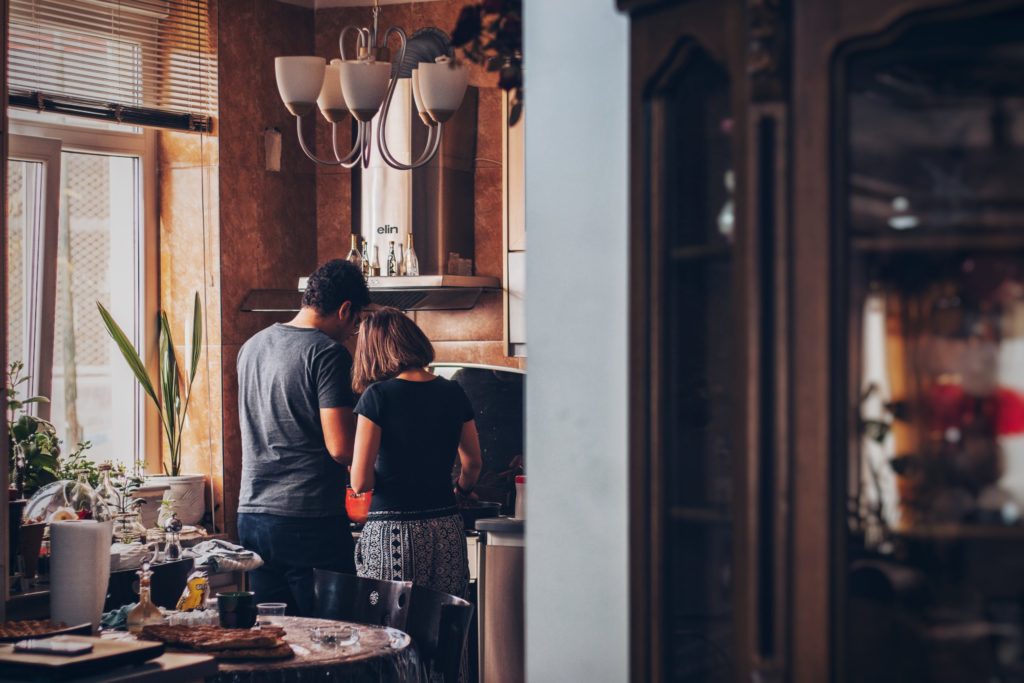
Once it became clear that we would be spending months at home, Affluents wasted no time investing in their spaces. Almost every affluent we’ve talked to made some significant changes to their homes – from adding on outdoor spaces and major remodels to updating paint and purchasing new furniture. And data shows that they were not alone. According to Mintel/Lightspeed, more than 30% of homeowners with a household income of more than $100,000 reported an increase in the importance of spending on home improvement. That was almost double the increase in other income brackets. The term “pandecorating” was even coined to capture the trend.
Over the last eight months, we’ve walked with clients through this trend. And their investments have paid off. If your high-end home brand has not experienced this same level of interest and sales, here are a few questions you should be asking yourself and your marketing team.
- Have you made it convenient for your prospective customers to “experience” your product virtually?
While there’s historically been a strong consumer preference to literally touch and feel high-end products before purchase, there are other ways to interact with customers along the path to purchase, keeping them engaged and closer to making a final purchase decision. And let’s face it, creating unique and seamless ways to experience your product virtually is no longer optional but a necessity, particularly for premium home products. In fact, we are working on an augmented reality project with a client to help. Also, consider an influencer marketing strategy that provides customers an insider’s view of your product and how it performs in a real-world application. These online activities can help shorten the path to purchase, increasing dealer visits by customers who are closer to, or ready to finalize, a purchase.
- Did you scale back your marketing efforts?
We understand times are challenging and tough budget decisions are inevitable, but we strongly discourage clients from going dark or staying dark for too long. History has taught us that the brands that continue to invest in marketing during economic downturns leap ahead of the competition, ultimately gaining critical market share when the market returns. And the brands that suspend or discontinue marketing investments have to spend even more to make up for lost ground, with some never recovering.
In addition, Ipsos suggests “that purchase journeys for these categories [renovating homes, buying appliances] may be condensed or truncated following the lockdown.” The brands that remain diligent in their marketing efforts will likely see the fruit of their efforts in the months ahead, if not already. If you had to pause marketing, look at ways you can start, even slowly, getting your message in front of the right audience. The longer your brand is silent, the more ground it’ll have to make up, and the more it will cost to catch up.
- What are you doing to support your customers and communities?
Customers are more and more focused on what your company stands for, in addition to what you are selling and how it makes them feel. Think of it this way: How a product or service makes them feel now extends to how a business operates, treats their employees, their customers and the communities they serve. We’ve recently written about how affluent consumers have long looked for and been loyal to brands that reflect their values. So much so, some have taken to calling Purpose the fifth P of marketing. It is no longer optional but a necessity that brands address corporate social responsibility. The stakes and the rewards are even higher for premium brands targeting more discerning, affluent consumers.
We are proud to partner with a commercial appliance brand that used the shutdown as a time to support and promote the struggling restaurant industry. They made the decision because it was the right thing to do, and it was true to their DNA. We believe that by sticking to their values, their brand will stand the test of time, and they will build an even more loyal customer base.
- Does your installation or delivery process feel overwhelming?
With convenience being key and safety of critical concern, you need to ensure customers are clear about what a post-purchase delivery or installation will entail. Allowing someone into their homes – their safe havens – can be a large ask right now and requires a high level of trust. Demonstrating care for their health and safety, as well as the health and safety of your employees and the distribution network, will go a long way in the eyes of affluent consumers.
Ensure that your customers feel comfortable that necessary precautions are being taken, and that your installers, dealers, specifiers and delivery teams will use the utmost care. Demonstrating these safeguards will also likely result in loyalty and positive word of mouth, influencing other similar customers.
- Are Designers, Builders and Architects still top of mind?
Despite downturns or market shifts, one thing continues to matter – the influence of professionals. In fact, sometimes they are more critical than the end consumer. Affluents look to their trusted design partners for recommendations on products, updates and remodels.
If you have pulled back on your efforts, we recommend you rethink this strategy as a first step.
This community is seeing a surge in inquiries. In fact, designers listed on Houzz reported a 58% increase in requests from homeowners compared to the same time last year. Trying to keep up with demand, while following public health protocols and making sure that their clients can get products on time, can be a lot to juggle. Providing the resources, thought leadership and training to help during this time could pay dividends in the long run by building trust with this audience and helping them grow their business.


